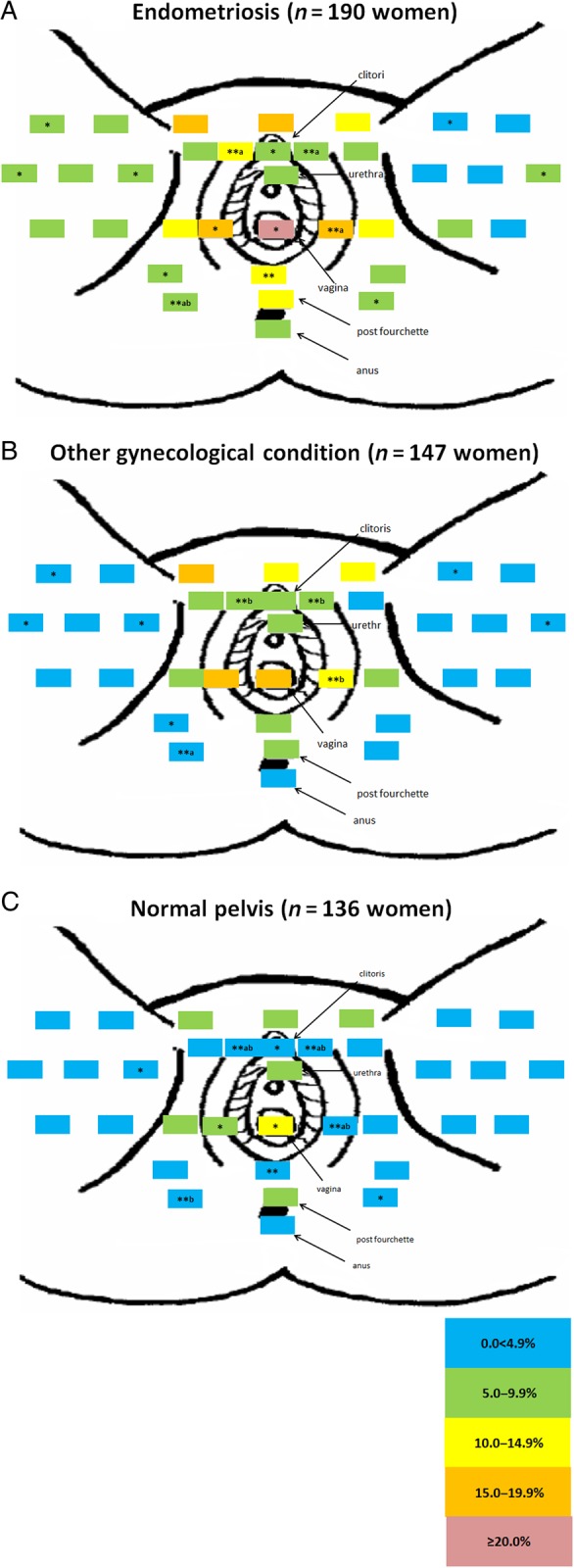Figure 1.

Percent distribution of anatomical site-specific pain in the perineal area by post-operative diagnosis. (A = endometriosis, B = other gynecologic pathology and C = normal pelvis). Significant differences (*P < 0.05 and **P < 0.01) between pair-wise pain report frequencies were conducted using the Tukey procedure for multiple comparisons (Elliott and Reisch, 2006; Zar, 2009). Women only indicated areas where they experienced regular pain, if any. To delineate significant differences between more than two groups (endometriosis, other gynecologic pathology and normal pelvis), values sharing a common superscript (a or b) are significantly different at *P < 0.05 and **P < 0.01. Study sample for these analyses includes all women undergoing a diagnostic and/or therapeutic laparoscopy or laparotomy regardless of clinical indication who participated in the ENDO Study (n = 473). There were no missing data in regards to pain location by post-operative diagnosis. Primary post-operative diagnosis among women with gynecologic pathology included uterine fibroids (n = 58), pelvic adhesions (n = 30), benign ovarian cysts (n = 46), neoplasm (n = 3) and congenital Müllerian anomalies (n = 10). Primary reason for surgery among women with a post-operative diagnosis of a normal pelvis included tubal ligation (n = 36), pelvic pain (n = 42), pelvic mass (n = 9), infertility (n = 16), and menstrual irregularities (n = 32), missing (n = 1).
